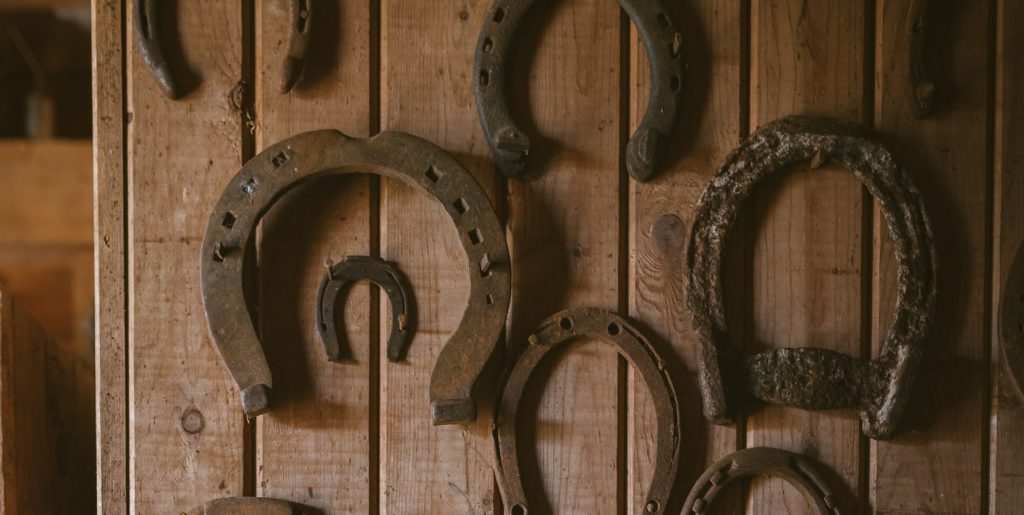
Bill Berryman was a highly experienced and skilled farrier from Wales who immigrated to Colorado in the early part of the 20th century with a unique background and a deep understanding of horses and their movements. His years spent driving teams of horses hauling the red slate rock that was used in the building of the University of Colorado from the Lukenon Quarry in Lyons to Boulder, Colorado which was 17 miles in each direction gave him a unique perspective on shoeing. Really in many ways he was the last of breed of horsemen (and maybe I should include women) who used horses to haul freight over rough dirt roads for years on end, and had the ability to observe long hours of the horses movements and the use that knowledge to the best of his ability to craft shoes to enhance their movement and protect their feet.
Farriers who have spent considerable time observing and working with horses in real-world situations often develop a keen eye for confirmation and a deep understanding of equine biomechanics. This knowledge enables them to provide customized shoeing solutions that address the specific needs of each individual horse, whether it be for general maintenance, performance enhancement, or corrective purposes. Such experienced farriers are valuable assets to the equestrian community, as they play a crucial role in maintaining the health and soundness of horses across various disciplines and activities as we all know. I also believe even the best shoeing job isn’t as good as nature intended, unless the horse has some very challenging confirmation problems. That is why I believe the various forms of myofascial manipulation and cranial sacral therapy can be a perfect addition to the horse overall well being and performance if the shoes might create some imbalances in the lower leg that would translate in to the shoulder and then through the entire structure.
The question of whether horses can maintain their soundness using alternatives to traditional metal horseshoes, such as over boots made of tough rubber or other materials, is a discussion within the equestrian community. Easy boots and similar hoof protection options have gained popularity among some horse owners and riders who seek alternatives to traditional metal shoeing.I used them on my Arabian mares in endurance rides and the everyday trail riding and often just left them barefoot riding in the mountains of Utah and Colorado with great results. The hooves maintained great health being left unshod, and when it was time to do a competitive ride, I just slipped on the Easy Boots,( which weren’t always so easy to slip on I must admit)
Easy boots and other brands are designed to allow the hoof to expand and contract naturally as the horse moves, promoting better blood circulation and overall hoof health. This can be beneficial for some horses, especially those with healthy hooves and a proper barefoot trimming regimen. They definitely protect against abrasive surfaces, including rocks, and sharp objects, which can be particularly useful for horses working or riding in challenging terrain. They also provide additional traction in slippery conditions.
Also for some horses, avoiding the use of metal nails and shoes may help preserve the integrity of the hoof wall and prevent potential issues related to nail holes and shoe-related injuries. If transitioning from traditional shoeing to easy type boots or barefoot hoof care, horses usually require an adjustment period. The hooves may need time to strengthen and adapt to the new conditions especially thin walled hooves which in my heyday were a great many thoroughbreds. Maybe with the mixing with warm bloods their hooves have changed somewhat.
Also I want to make it clear that the use of easy boots or alternative hoof protection is not a criticism of traditional farriers or shoeing practices. I had my ass higher then my head on many occasions. Many farriers are open to exploring different options and will work with horse owners to find the best solution for each horse’s individual needs and circumstances. And of course you will still need their service for trimming, unless you are educated enough and want to do it yourself.
As with any decision related to horse care, the focus should be on the well-being and soundness of the horse. Keeping an open mind and being receptive to exploring different approaches can lead to the best outcomes for the horse’s health and performance. Managing their structure is always a good idea in every way possible
Leave a Reply